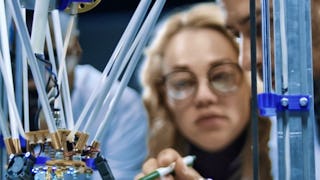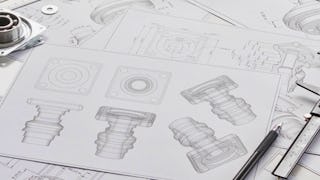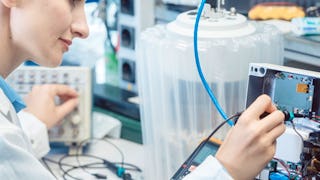Hello, everyone! Welcome to this course on Rapid Prototyping Materials and Tooling. This is part of the Rapid Prototyping and Tooling specialization. In this course, I’ll cover the characteristics and appropriate uses of a variety of prototyping materials, including cardboard, plastic, wood, and aluminum. I’ll also cover some of the common forms of traditional machining used in making prototypes, as well as more advanced manufacturing tools such as 3D printers, laser cutters, and more!
通过 Coursera Plus 解锁访问 10,000 多门课程。开始 7 天免费试用。


Rapid Prototyping Materials and Tooling
本课程是 Rapid Prototyping and Tooling 专项课程 的一部分

位教师:Daniel Frank
包含在 中
您将学到什么
You will understand the strengths and weaknesses of common materials and tooling used for rapid prototyping and situations for when to use each one.
您将获得的技能
要了解的详细信息
了解顶级公司的员工如何掌握热门技能

积累特定领域的专业知识
- 向行业专家学习新概念
- 获得对主题或工具的基础理解
- 通过实践项目培养工作相关技能
- 获得可共享的职业证书

该课程共有4个模块
Hello, everyone! Welcome to this course on Rapid Prototyping Materials and Tooling. This is part of the Rapid Prototyping and Tooling specialization. In this course, I’ll cover the characteristics and appropriate uses of a variety of prototyping materials, including cardboard, plastic, wood, and aluminum. I’ll also cover some of the common forms of traditional machining used in making prototypes, as well as more advanced manufacturing tools such as 3D printers, laser cutters, and more! By the end of this course, you should have a better understanding of the strengths and weaknesses of common prototyping materials and manufacturing processes, as well as the situations in which their use is most appropriate. The hope is that by having a better understanding of these materials and machines, you will be able to better develop high-quality prototypes. There's a lot of really exciting content to cover in this course, so without further ado, let’s dive into the world of rapid prototyping!
涵盖的内容
3个视频2篇阅读材料
In this module, you will learn about basic material properties such as density, toughness, and strength. You will also learn about the different characteristics of common prototyping materials like cardboard, plastics, wood, and aluminum.
涵盖的内容
5个视频2个作业
In this module, you will learn about the different types of traditional machining tools that are useful for making prototypes, such as the hack saw, bandsaw, chop saw, hack saw, drill press, lathe, and mill.
涵盖的内容
1个视频2个作业
In this module, you will learn about many different CNC machines that can be used to fabricate prototypes. In particular, this module will go into detail about the considerations and choices an engineer needs to make when making a part with a 3D printer or a laser cutter.
涵盖的内容
3个视频10篇阅读材料3个作业1次同伴评审
获得职业证书
将此证书添加到您的 LinkedIn 个人资料、简历或履历中。在社交媒体和绩效考核中分享。
位教师

从 Mechanical Engineering 浏览更多内容
 状态:免费试用
状态:免费试用Arizona State University
 状态:免费试用
状态:免费试用Arizona State University
 状态:免费试用
状态:免费试用Arizona State University
 状态:免费试用
状态:免费试用Arizona State University
人们为什么选择 Coursera 来帮助自己实现职业发展




常见问题
To access the course materials, assignments and to earn a Certificate, you will need to purchase the Certificate experience when you enroll in a course. You can try a Free Trial instead, or apply for Financial Aid. The course may offer 'Full Course, No Certificate' instead. This option lets you see all course materials, submit required assessments, and get a final grade. This also means that you will not be able to purchase a Certificate experience.
When you enroll in the course, you get access to all of the courses in the Specialization, and you earn a certificate when you complete the work. Your electronic Certificate will be added to your Accomplishments page - from there, you can print your Certificate or add it to your LinkedIn profile.
Yes. In select learning programs, you can apply for financial aid or a scholarship if you can’t afford the enrollment fee. If fin aid or scholarship is available for your learning program selection, you’ll find a link to apply on the description page.
更多问题
提供助学金,
¹ 本课程的部分作业采用 AI 评分。对于这些作业,将根据 Coursera 隐私声明使用您的数据。




